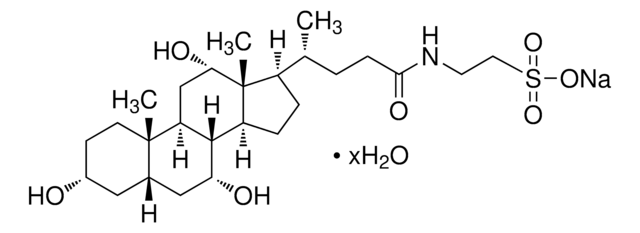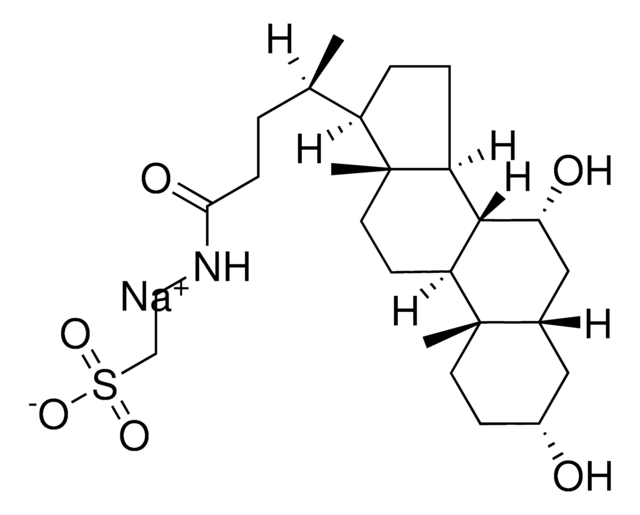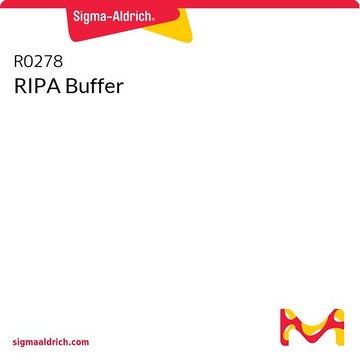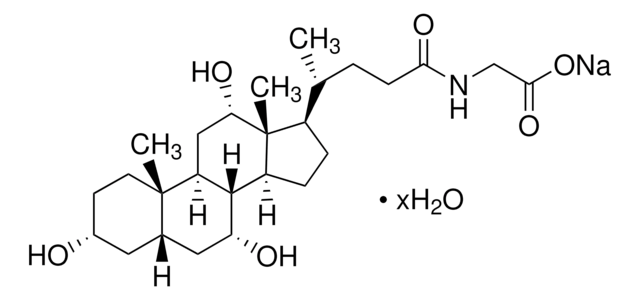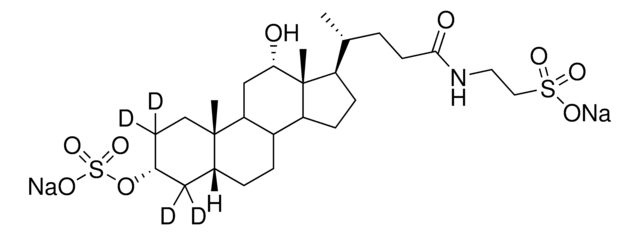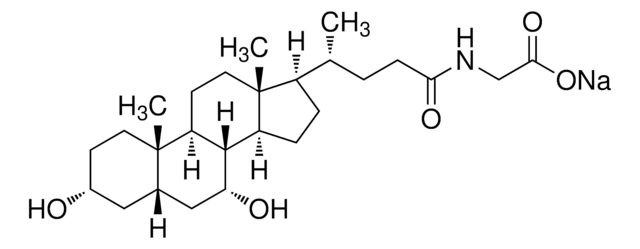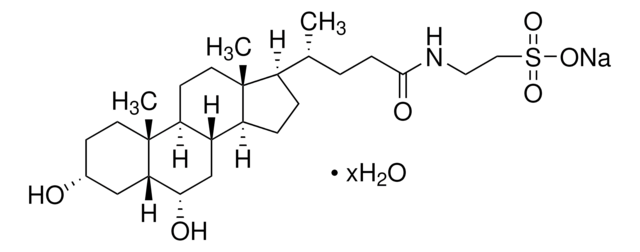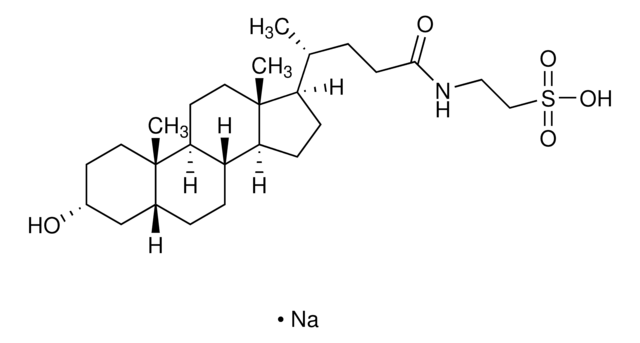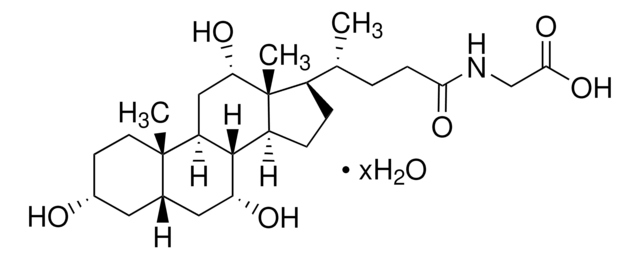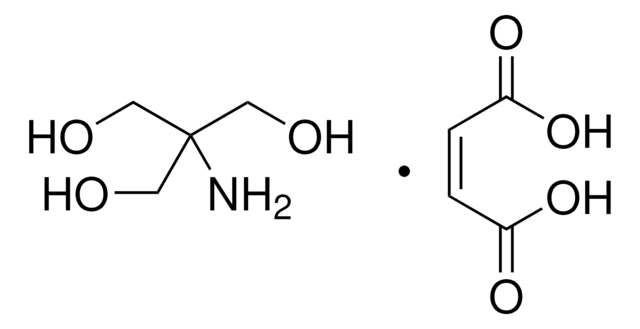Kluczowe dokumenty
T0557
Sodium taurodeoxycholate hydrate
BioXtra, ≥97% (TLC)
Synonim(y):
2-([3α,12α-Dihydroxy-24-oxo-5β-cholan-24-yl]amino)ethanesulfonic acid, Taurodeoxycholic acid sodium salt hydrate
About This Item
Polecane produkty
opis
anionic
linia produktu
BioXtra
Próba
≥97% (TLC)
masa cząsteczkowa
micellar avg mol wt 3100
liczba agregacji
6
zanieczyszczenia
≤0.002% Phosphorus (P)
≤0.1% Insoluble matter
CMC
1-4 mM (20-25°C)
rozpuszczalność
H2O: 0.5 M, clear, colorless to faintly yellow
ślady anionów
chloride (Cl-): ≤0.5%
sulfate (SO42-): ≤0.05%
ślady kationów
Al: ≤0.0005%
Ca: ≤0.005%
Cu: ≤0.0005%
Fe: ≤0.0005%
K: ≤0.01%
Mg: ≤0.005%
NH4+: ≤0.05%
Pb: ≤0.001%
Zn: ≤0.0005%
ciąg SMILES
O.[Na+].C[C@H](CCC(=O)NCCS([O-])(=O)=O)[C@H]1CC[C@H]2[C@@H]3CC[C@@H]4C[C@H](O)CC[C@]4(C)[C@H]3C[C@H](O)[C@]12C
InChI
1S/C26H45NO6S.Na.H2O/c1-16(4-9-24(30)27-12-13-34(31,32)33)20-7-8-21-19-6-5-17-14-18(28)10-11-25(17,2)22(19)15-23(29)26(20,21)3;;/h16-23,28-29H,4-15H2,1-3H3,(H,27,30)(H,31,32,33);;1H2/q;+1;/p-1/t16-,17-,18-,19+,20-,21+,22+,23+,25+,26-;;/m1../s1
Klucz InChI
OLPIZAYYAVQETM-GGPRKOIFSA-M
Szukasz podobnych produktów? Odwiedź Przewodnik dotyczący porównywania produktów
Opis ogólny
Zastosowanie
Kod klasy składowania
11 - Combustible Solids
Klasa zagrożenia wodnego (WGK)
WGK 3
Temperatura zapłonu (°F)
Not applicable
Temperatura zapłonu (°C)
Not applicable
Środki ochrony indywidualnej
Eyeshields, Gloves, type N95 (US)
Wybierz jedną z najnowszych wersji:
Masz już ten produkt?
Dokumenty związane z niedawno zakupionymi produktami zostały zamieszczone w Bibliotece dokumentów.
Klienci oglądali również te produkty
Produkty
Today, diverse studies report the benefits of probiotics, such as inhibitory effects on pathogens, aid in the management or prevention of chronic intestinal inflammatory diseases or atopic syndromes, and support to the immune system. Potential beneficial applications abound, researchers continue to evaluate the effictiveness and clarify the mechanisms of action of probiotics.
Nasz zespół naukowców ma doświadczenie we wszystkich obszarach badań, w tym w naukach przyrodniczych, materiałoznawstwie, syntezie chemicznej, chromatografii, analityce i wielu innych dziedzinach.
Skontaktuj się z zespołem ds. pomocy technicznej

